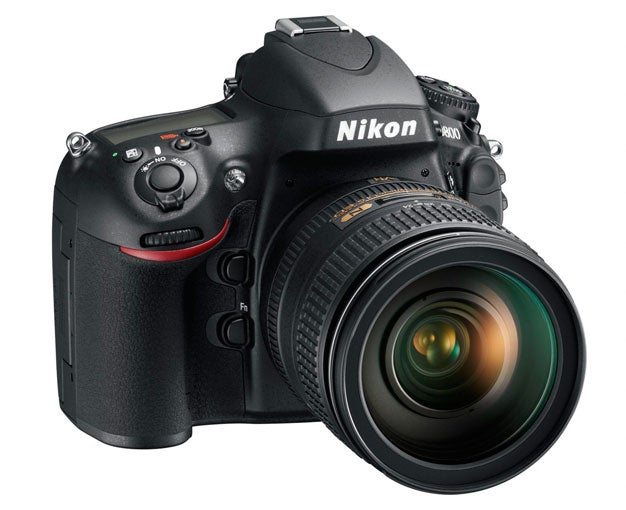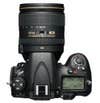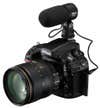New Gear: Nikon D800 36.3-Megapixel Full-Frame DSLR
There will also be a D800E Model Without the optical lowpass filter

We may earn revenue from the products available on this page and participate in affiliate programs. Learn more ›
When Nikon announced the D4 DSLR a while back, they made it very clear that they wanted it to be a full-fledged multi-media machine. That sentiment has been carried down a level with the new D800, which boasts many of the same video capture features in addition to its massive megapixel count.
Nikon has tweaked just about everything that could be tweaked in its predecessor, D700. At the heart of it is a 36.3-megapixel full-frame (FX format) CMOS sensor. That’s coupled with the Expeed 3 image processor. As a result, it has a maximum resolution of 7360 x 4912. That’s roughly 150% the pixel count of Nikon’s flagship D3X DSLR. To help accomodate all that data, is has both an SD and a CF card slot. It doesn’t, however, accept the new XQD cards like the D4.
But, the revamp doesn’t stop at the sensor and processor. It has a new 91,000-pixel 3D Color Matrix Metering III system with an added emphasis on facial detection, so they claim it will perform better, even in tricky lighting situations like strong backlight.
It has a 51-pount AF system, 15 of which are cross-type on a 3500FX autofocus center module. That promises to provide an improvement over the D700, but likely won’t be quite as snappy as its big brother, the D4. Nikon does promise that it will be able to focus in situations as dark as -2 EV, which we’ll gladly check out in our test lab. The native ISO range goes from 100 up to 6400, but it’s expandable down to 50 and up to 25,600.
Unlike one of its other main competitors, the aging Canon 5D Mark II, the D800 has a built-in flash that works with Nikon’s Creative Lighting System, which means it can be used to control other Nikon speedlights wirelessly. That’s something we’re definitely glad to see.
But, in addition to all of the still photography stuff, there’s also the video capture. You can get 1920 x 1080 at 30p, 25p, and 24p. Drop down to 1280 x 720 and you can add 60p and 50p to the equation. It has full, uncompressed digital output via HDMI, which means serious film makers can use it with a capture device instead of going to a card and it even has the headphone jack film makers were so happy to hear about on the D4. Ultimately, it’s an extremely capable video machine.
Because it has so much resolution and a full-frame sensor, the D800 offers several crop modes, including a 1.2x setting and a 1.5x DX setting, which still maintains a 15.4-megapixel resolution. It may not get a ton of use from the photo side, but with HD video not requiring the full sensor, it could come in very handy for motion picture shooting.
In the end, the D800 really does seem to keep the focus on maximizing image quality. The new AF system should prove quick, but with a burst rate that caps off at 4 FPS, it still leaves plenty of room to remember why the D4 is the top dog.
The D800 will start shipping in late march for $2,999. That’s slightly more expensive than the D700’s $2,700 price, but you get a lot more resolution and the multimedia comparison isn’t even close.
As a note, there’s also another version known as the D800E, which is the exact same camera, only the lowpass filter has been removed. While the filter does combat aliasing, which is a distracting effect found in areas of repeating detail, it also slightly reduces the camera’s maximum fidelity. This is primarily something requested by studio or landscape shooters, but it also works to the benefit of some video shooters. The D800E will cost $3,299 and will ship in mid April.
So, what do you think? Is it everything you wanted out of the D800?








